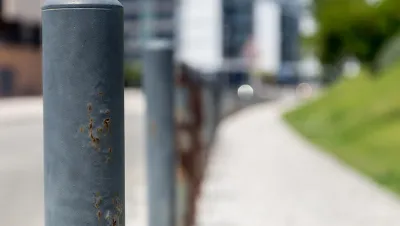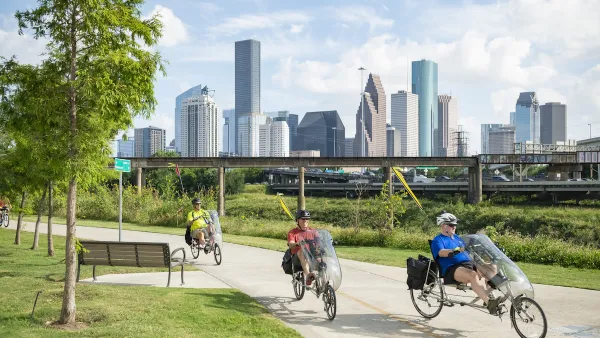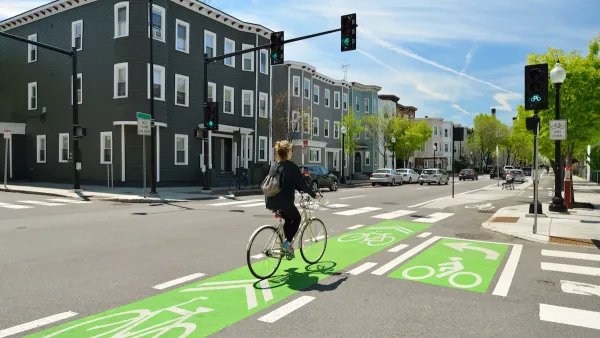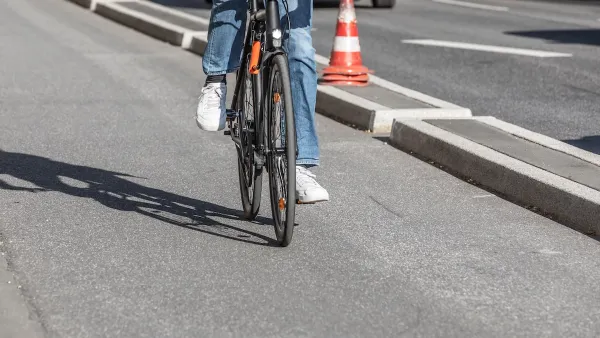Minor pedestrian-oriented improvements alone won't improve walkability if infrastructure still prioritizes fast-moving vehicles, according to this article.

Pedestrian infrastructure projects too often prioritize faster car traffic and fail to implement real protective measures for people walking, argues Joe Cortright. Houston's Energy Corridor, which recently received a high-profile "pedestrian makeover," provides a prime example of the "remedial and performative" projects that, according to Cortright, project the appearance of walkability while maintaining "an auto-dominated and pedestrian hostile environment." With 60,000 cars passing through every day, the newly renovated intersection, with its dangerous "slip lanes," offers minimal safety for pedestrians and cyclists. Aside from the lack of real protection for pedestrians, the area suffers from a lack of walkable destinations. "Pro-tip: any area that describes itself as a 'corridor' is almost always an auto-dominated, pedestrian-hostile space, a place people travel through, rather than being in."
Cortright points to similar examples in other cities, asserting that "much of what purports to be 'pedestrian' infrastructure, is really car infrastructure, and is only necessary in a world that’s dominated by car travel." True pedestrian infrastructure, he writes, includes density, walkable destinations, and fewer, slower cars. "Walkability and pedestrian safety are really about building great places, not piecemeal and largely decorative so-called infrastructure."
FULL STORY: More performative pedestrian infrastructure

National Parks Layoffs Will Cause Communities to Lose Billions
Thousands of essential park workers were laid off this week, just before the busy spring break season.

Retro-silient?: America’s First “Eco-burb,” The Woodlands Turns 50
A master-planned community north of Houston offers lessons on green infrastructure and resilient design, but falls short of its founder’s lofty affordability and walkability goals.

Delivering for America Plan Will Downgrade Mail Service in at Least 49.5 Percent of Zip Codes
Republican and Democrat lawmakers criticize the plan for its disproportionate negative impact on rural communities.

Test News Post 1
This is a summary

Test News Headline 46
Test for the image on the front page.

Balancing Bombs and Butterflies: How the National Guard Protects a Rare Species
The National Guard at Fort Indiantown Gap uses GIS technology and land management strategies to balance military training with conservation efforts, ensuring the survival of the rare eastern regal fritillary butterfly.
Urban Design for Planners 1: Software Tools
This six-course series explores essential urban design concepts using open source software and equips planners with the tools they need to participate fully in the urban design process.
Planning for Universal Design
Learn the tools for implementing Universal Design in planning regulations.
EMC Planning Group, Inc.
Planetizen
Planetizen
Mpact (formerly Rail~Volution)
Great Falls Development Authority, Inc.
HUDs Office of Policy Development and Research
NYU Wagner Graduate School of Public Service





























